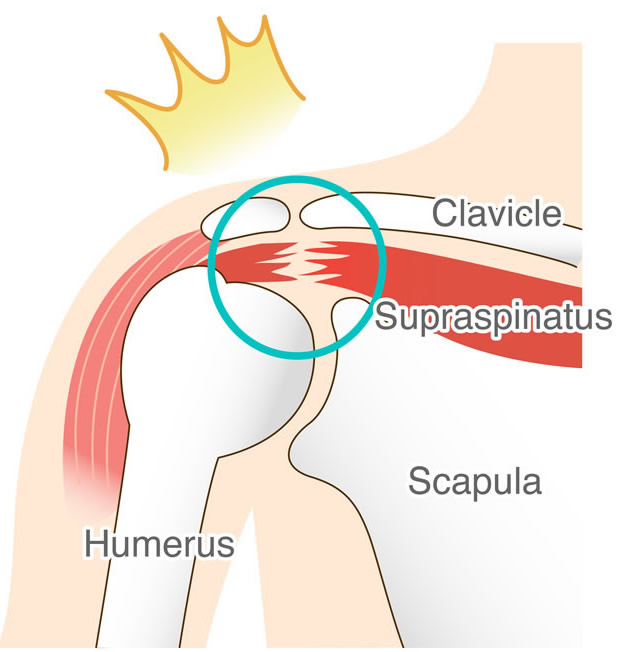
Rotator Cuff Tears
4 group of muscles that stabilize the shoulder joint and contribute for proper functioning of shoulder are together termed as rotator cuff. They are named supraspinatus, infraspinatus, subscapularis and teres minor. When any of the muscle or tendon gets irritated, damaged or torn leads to pain and restriction of movements of shoulder joint.
The causes for rotator cuff tears, partial or full, are as follows:
- Age > 40 years
- Fall on outstretched hand
- Sudden jerks like while walking a dog with strap in hand
- Occupations requiring repetitive and excessive overhead movements
- Overhead sports and athletes like throwers, swimmers, tennis players, etc.
- Degenerative etiology is the major cause.
- Dislocation of shoulder joint in 40-60 years of age.
- About 2/3rd cases are seen in male population.
Classification of Rotator
Cuff Tears (according to american arthroscopic orthopedics)
- Small Tear (< 1 cm)
- Medium Tear (1-3 cm)
- Large Tear (3-5 cm)
Clinical Tests
Special shoulder tests that are helpful in diagnosing rotator cuff tears is loss of active abduction and presence of full passive range of motion and the impingement syndrome is the painful arc sign. There are innumerable other tests but your doctor will decide it for you.
Clinical Features
- Pain and Swelling
- Inability to lift shoulder without external support or opposite hand support
- Often Pseudoparalysis
- Limitation of active shoulder movements
- Muscle Atrophy (Supraspinatus and Infraspinatus)
- Tenderness over the greater tuberosity
Investigations to Diagnose Rotator Cuff Lesions
- X-rays of the Shoulder: This helps to detect bony avulsions, spurs, calcific deposits, sclerotic areas, arthritis.
- Ultrasonography: This is highly reliable in diagnosing rotator cuff pathology with a sensitivity of 70-80 percent. But it is a highly observer dependent investigation.
- MRI: This is the gold standard to diagnose rotator cuff tears. It gives information on which muscles are involved, what thickness of muscle is involved, what is the size of the tear, shape of the tear, degenerative changes (fatty infiltration of the muscle).
Conservative Treatment
It consists of rest, ice, nsaids and physiotherapy. This is more suitable of non dominant hand partial thickness tears or tendinitis only. Subacromial steroid injections are helpful for patients having tendinitis with more symptoms of impingement rather than full thickness tears or a component of adhesive capsulitis/frozen shoulder along with rotator cuff tears.
Surgical Treatment Indications:
- Failure of conservative treatment for three months
- If the patients are young and active, and if there is increasing loss of shoulder function, surgery is indicated.
- Full thickness tears are better treated surgically.
Methods
- Arthroscopic Repair
- Open Repair
Depending upon the Etiological Factors, the following surgical techniques are described:
- Excision Of Calcium Deposits
- Repair Of Incomplete Tear
- Subacromial Decompression
- Acromioplasty
- Single Row Repair
- Double Row Repair
- Biceps Tenotomy
- Biceps Tenodesis
- Distal Clavicle Excision (MUMFORD Procedure)
More often than not, a combination of these procedures is done to give the best desired result.
Arthroscopic Rotator Cuff Tear Repair is a minimally invasive surgery to fix a torn shoulder muscle. Instead of a big cut, tiny incisions are made for a camera and small tools. The surgeon uses these tools to stitch the torn muscle back together. This helps reduce pain, improve shoulder movement, and get you back to your activities faster. After surgery, gentle exercises and physical therapy will help you regain strength and flexibility. Your doctor will guide you through the recovery process.
To know more kindly contact the best orthopaedic surgeon Dr. Rahul Modi for further queries.
This surgery is frequently performed by the best orthopaedic surgeon Dr. Rahul Modi for treating Rotator Cuff Tears.